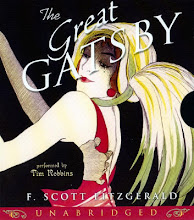

On January 16, 1920, Prohibition went into affect, making it illegal to distribute, manufacture, or transport alcoholic beverages, but it was still legal to posses and consume these beverages.. Prohibition was believed to make a decrease in crime, less social problems and, a decrease in corruption. This was believed that taxes would lower, due to not having to support as many people in prisons. Due to it not being illegal to posses, doctors would prescribe alcohol to patients, and many people stocked up on alcohol before the law was passed.
 Many people were still drinking alcohol, as speakeasies, secret rooms where alcohol was served, were very common. They got there name as they were secret places, you had to keep your voice down inside of them, and they normally required a password to enter.
Many people were still drinking alcohol, as speakeasies, secret rooms where alcohol was served, were very common. They got there name as they were secret places, you had to keep your voice down inside of them, and they normally required a password to enter. The ban of alcohol brought a rise in organized crime, which crime was one of the reasons alcohol was banned. Bootleggers would make their own alcohol, or smuggle it from Canada and distribute it in the United States. Bootlegging made a very large profit, and one of the most famous bootleggers was Al Capone. He used his profits from bootlegging to expand his criminal empire. This ban of alcohol wasn't very effective, and even raised crime, which it was supposed to prevent. Prohibition still continued through the 1920s, until it was repealed in 1933.
The ban of alcohol brought a rise in organized crime, which crime was one of the reasons alcohol was banned. Bootleggers would make their own alcohol, or smuggle it from Canada and distribute it in the United States. Bootlegging made a very large profit, and one of the most famous bootleggers was Al Capone. He used his profits from bootlegging to expand his criminal empire. This ban of alcohol wasn't very effective, and even raised crime, which it was supposed to prevent. Prohibition still continued through the 1920s, until it was repealed in 1933.







Good post, but you need to cite your sources. Your background and header looks great! 70/75
ReplyDeleteMs. Donahue